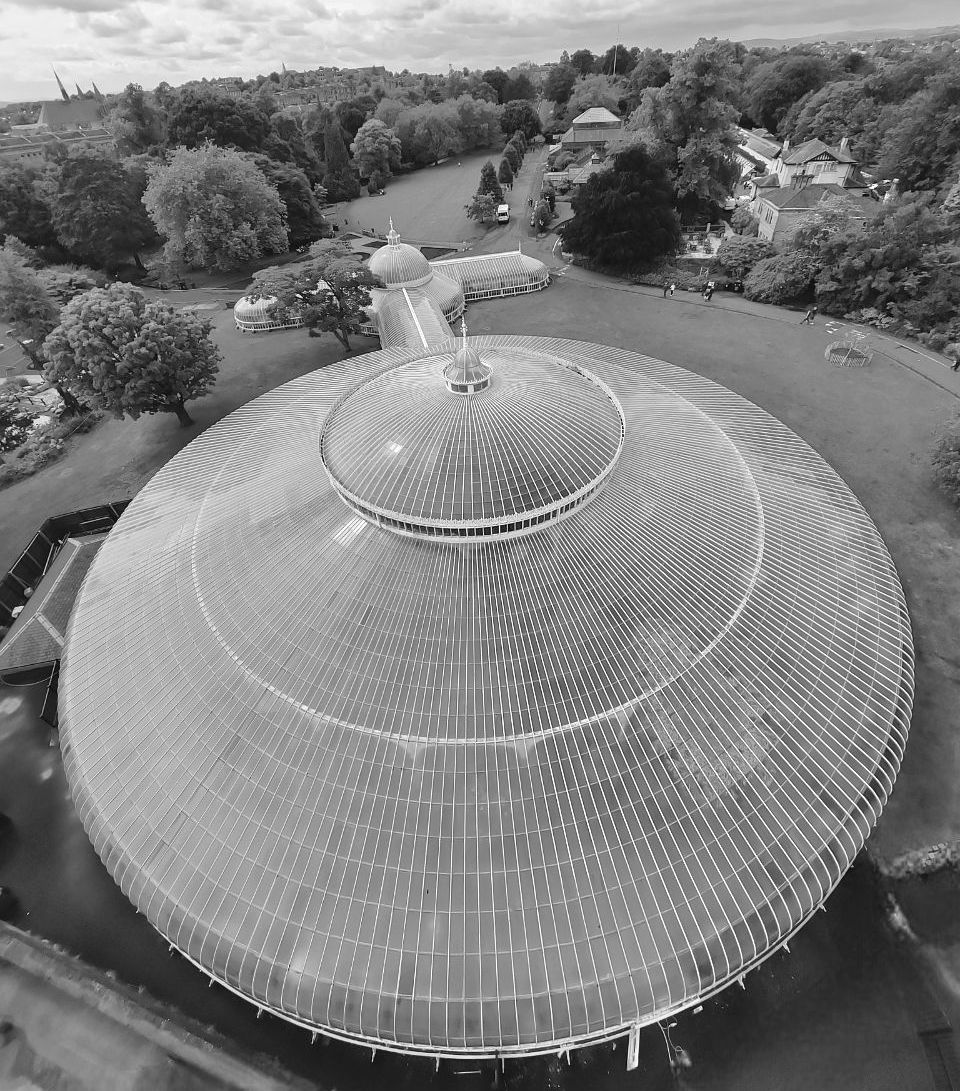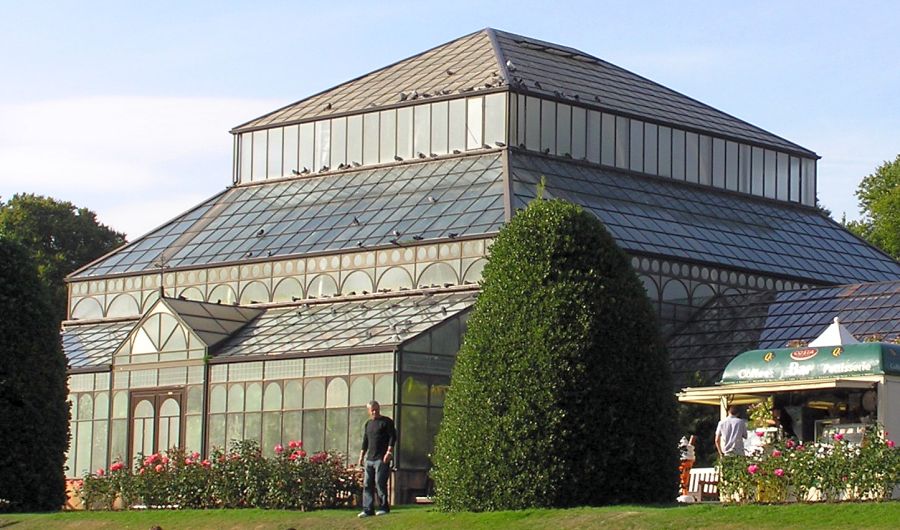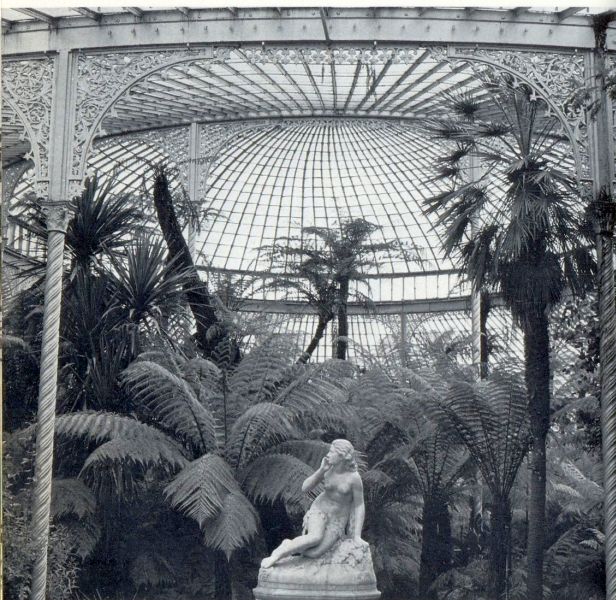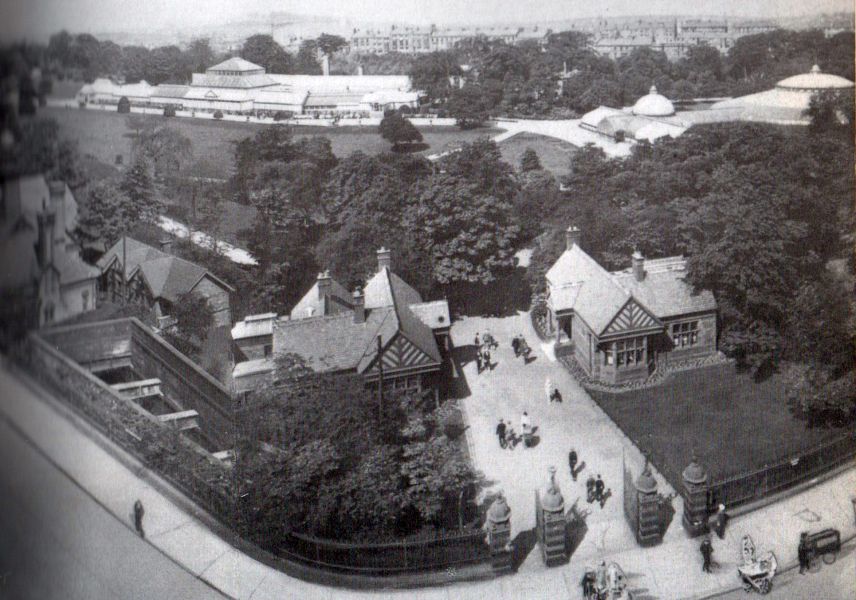  |
City of GlasgowBotanic Gardens
|

 |
Photographs of the Botanic Gardens in Glasgow:-
The Kibble Palace, Glasshouses, Flowerbeds,
"Half Penny Bridge"
 Kibble
Palace in the Botanic
Gardens in Glasgow
The Botanic Gardens in the West End of Glasgow is a large public park with several glasshouses, the most notable of which is the Kibble Palace. The gardens were created in 1817 and were run by the Royal Botanic Institution of Glasgow. The gardens have now been incorporated into the Parks and Gardens of the City of Glasgow. |
Kibble
Palace in the Botanic
Gardens in Glasgow
The Kibble Palace is a 19th century cast iron framed glasshouse designed by John Kibble. |
 Kibble
Palace
in the Botanic Gardens in Glasgow |
 Aerial
view of Kibble
Palace
in the Botanic Gardens in Glasgow |
 Aerial
view of Kibble
Palace
in the Botanic Gardens in Glasgow |
Flower
beds and Glasshouses
in the Botanic Gardens in Glasgow |
 Main
Glasshouse
in the Botanic Gardens in Glasgow |
Flower
Bed
in the Botanic Gardens in Glasgow |
Coniferous
plants
in the Kibble Palace |
Statue
of "Eve"
in the Kibble Palace |
 Statue
of "Eve"
in the Kibble Palace |
 The
Kibble Palace in the Botanic
Gardens
This began as a conservatory at Coulport House on Loch Long in the 1860s before being re-erected as a concert hall in Glasgow and then converted to a winter garden. |
 Old photo of the
Botanic Gardens
|
THE KIBBLE PALACE:
For more than a century and a half it has served as an antidote to Glasgow’s hectic streets and light hidden within an oasis of calm.
Whether you are strolling around, stopping to read a book, watching the carp ( and their resident colony of web-spinning spiders )
or playing hide-and-seek among its leafy paths, the Kibble Palace has long been a sanctuary for weary citizens and a playground for families.
But the iconic glass-and-iron structure has a hidden history which belies its peaceful interior, having hosted freak shows, concerts,
investitures and more since it opened its doors in 1873.
Now, as plans are mooted to start asking the public to pay for the privilege of passing through its portals, the time has come to look
back on the life of one of the city’s most famous landmarks.
The Kibble Palace, at the heart of Glasgow’s Botanic Gardens, bears the distinction of having been built three
times, bombed twice and once sailed upon a loch.
The story began as the brainchild the Victorian engineer John Kibble, whose 19th-century eccentricity still
seems to run through the building’s soul. Kibble, who famously crossed Loch Long on a floating bicycle, was a
man given to strange passions, pioneering the new art of photography using a camera so large
it had to be transported on a horse and cart.
Also described as an astronomer and entrepreneur, he conceived of a glasshouse he would dub the “Kibble Crystal Art Palace”,
and instructed architects James Boucher and James Cousland to build one at his home at Coulport.
Built with iron from the Saracen Foundry in the east end of Glasgow, it was finished in 1860 and filled with
ferns and citrus plants, with a pond in the middle where Kibble would sail model boats.
Yet just a decade later, he had grown bored of his artistic pleasure dome, and gave it to Glasgow, setting the stage for it to be
brought to its new home.
In a feat of engineering which seemed commonplace in the Victorian age, the Palace was dismantled piece-by-piece and loaded
onto a barge - unfortunately not bicycle-powered - on Loch Long.
From there, it was floated to the Clyde in Glasgow and brought to its current home in the west end, to become the centre-piece of the new Botanic Gardens.
In an echo of today’s row over the entry fee, it was free to enter for members of the Royal Botanic Institution of Glasgow , but the public
had to pay a penny.
Rebuilt and enlarged, the Kibble Palace was lit by hundreds of gas lamps. These were said to be able to change colour, and gave the Palace a
magical aura at night.
But it was not at first used as a greenhouse, and would have seemed very different to a time-travelling visitor from today.
Under the agreement with Kibble, the Palace was first used as the venue for a diverse range of entertainments.
Crowd-pleasers included shows such as “the extraordinary man fish” and the Kostromas, a father and son act who toured Britain to display
their hairy faces.
In 1874 the Palace hosted the visit of evangelical preachers Moody and Sankey from North America, who toured Scotland on a number of occasions.
In May of that year, the duo held a meeting at the Palace, and ended up proclaiming the gospel from the back of a horse-drawn cab due to the
number of people who turned up. Estimates of the time say 6,000 people were crammed inside, while a vast throng of between 15,000-30,000
gathered in the gardens outside.
The venue also hosted classical concerts - said to have been panned by critics due to the terrible acoustics inherent in a glass building - as well
as events of a more august nature.
Two of the greatest British politicians of the Victorian era were installed as rectors of Glasgow University at ceremonies within its environs.
Benjamin Disraeli - Lord Beaconsfield - took up the post on November 19, 1873 and William Ewart Gladstone in December, 1879.
But within a year, the glasshouse would take on the function that continues to this day.
With crowds for its entertainments dwindling, The Botanic Gardens bought Kibble out of the agreement, ending its time as a venue for shows,
though the price was so steep it forced the Glasgow Corporation to step in and take over its running.
The Palace assumed something of its modern demeanour in 1880 with the planting of a collection of tree ferns, many of which still survive.
Entertainments were halted, and the Palace was fully used as a greenhouse, becoming the haunt of respectable Victorian couples and
families taking the air on a Sunday.
However, the peace was shattered in 1914 when it was targeted by suffragettes attempting to blow it up.
In the end, their early morning raid was foiled by a night watchman and only 27 panes of glass were shattered.
This was the first of two occasions when Kibble’s masterpiece would be threatened by explosives. During the Second World War it was damaged by
Luftwaffe bombs dropped in the Clydebank Blitz.
Having closed in March 1941, it only re-opened in November 1946.
Since the war, the Palace has cemented its status as one of Glasgow’s landmarks, but the passage of time slowly chipped away at its iron
skeleton. In 2004, a £7million program of restoration was begun, with the glasshouse being completely dismantled for the second time to
allow corrosion of its ironwork to be treated and repaired.
Shipped to Shepley Engineers in Shafton, South Yorkshire, the iron lattice was painstakingly treated while decades of thick lead paint were
peeled away to reveal details hidden from view.
Two years later, the Palace was rebuilt for the third time on a slightly altered floor-plan, bolstered and refurbished to secure it for
generations to come.
Now once again taking pride of place in the Glasgow’s Botanics, the Kibble Palace continues to welcome families and those seeking solitude
within its wondrous interior.
Surely that’s worth at least a penny?
The Herald, 25/02/2023
 :: Kelvin River Walkway
:: Kelvin River Walkway

Glencoe | Ben Nevis | Knoydart | Isle of Skye | Isle of Arran | The West Highland Way
The Eastern Highlands | The Central Highlands | The Southern Highlands | The NW Highlands